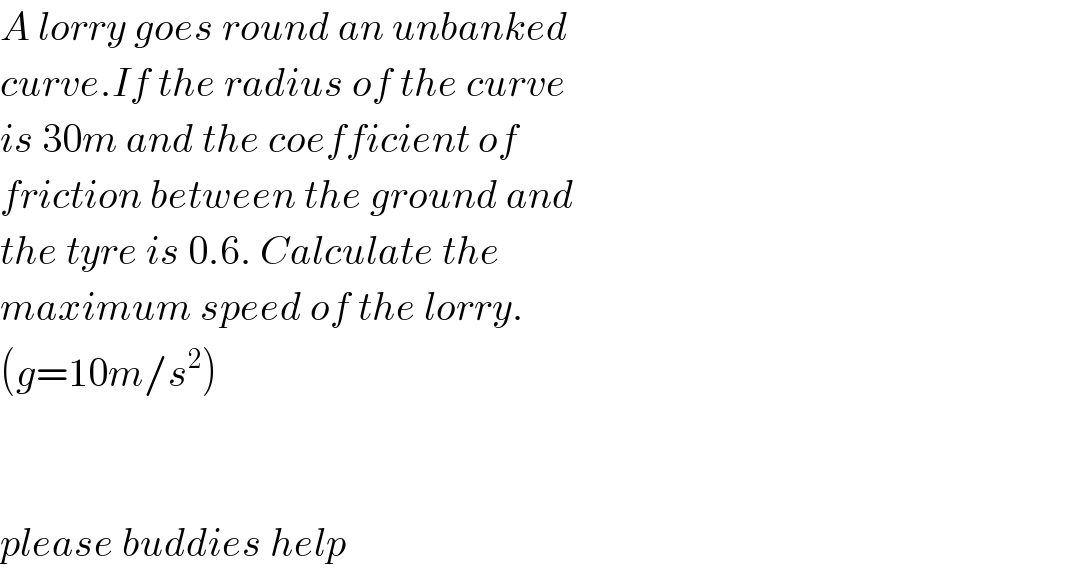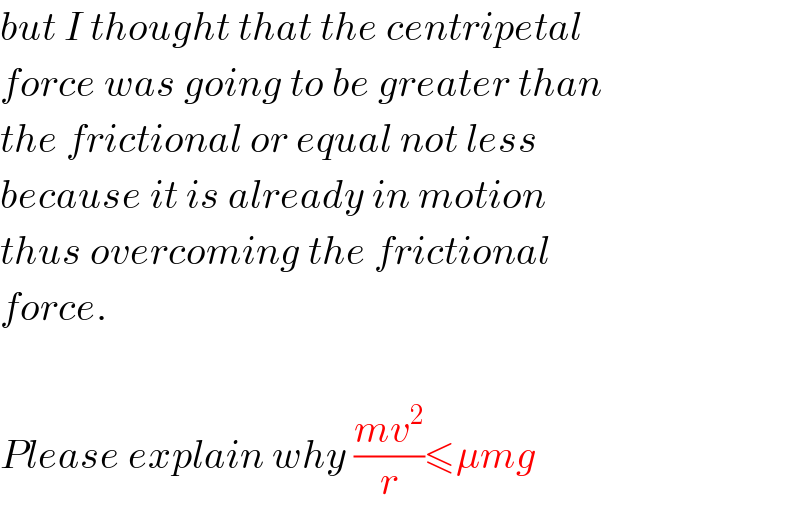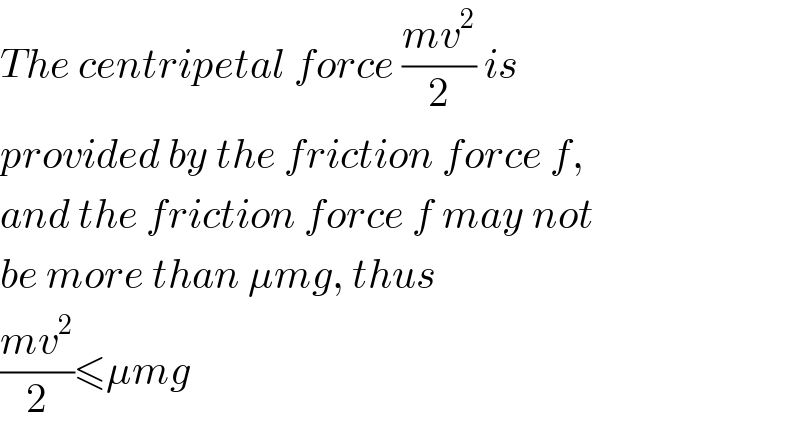Question Number 24177 by NECx last updated on 13/Nov/17

Commented by NECx last updated on 14/Nov/17

Answered by mrW1 last updated on 14/Nov/17

Commented by NECx last updated on 14/Nov/17

Commented by mrW1 last updated on 14/Nov/17

Commented by NECx last updated on 15/Nov/17

Answered by ajfour last updated on 14/Nov/17

